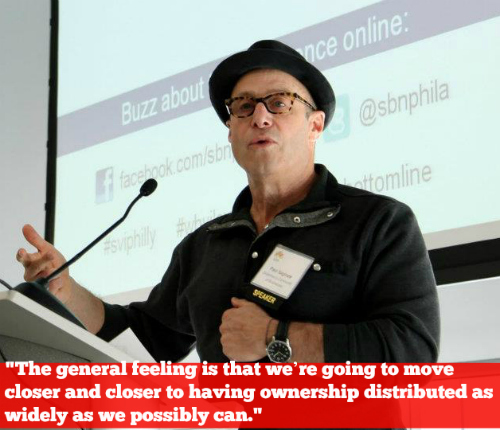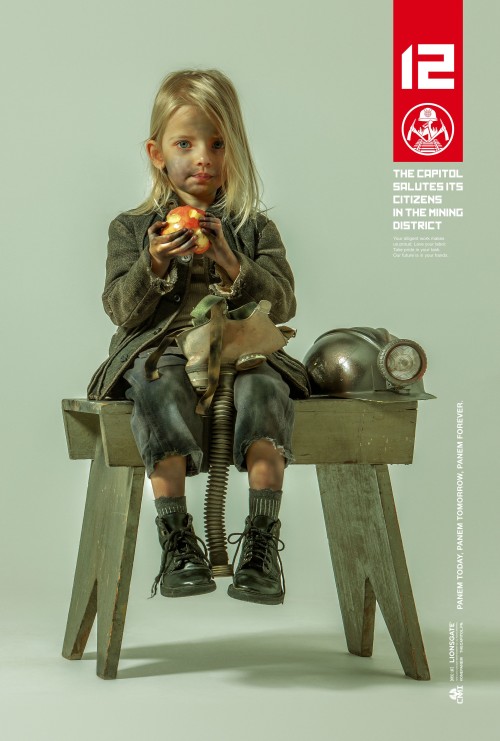As I suspect most of you know, a few days ago the Business Insider posted an article stating that, in the near future, Zingerman’s would be transitioning to a “worker-owned cooperative”. As you may not know, however, the folks at Zingerman’s quickly came out to say this wasn’t the case. While they were indeed planning to increase the voice of their employees in corporate decision making, and intended to put a system in place to increase employee ownership, Zingerman’s would not, according to the company’s release, become an employee-owned cooperative. Not satisfied to leave it at that, I reached out to Zingerman’s co-founder Paul Saginaw this weekend to ask why they wouldn’t be pursuing a cooperative model, and what, specifically, they intend to do instead. Following, with his permission, is our conversation, which gets into quite a bit of detail not only about these current initiatives, but also the long range plans concerning the future of the Zingerman’s Community of Businesses once he and co-founder Ari Weinzweig have passed on. It’s fascinating stuff.
MARK: A few days ago, the Business Insider posted a story about Zingerman’s transitioning to “worker-owned cooperative.” Given what I’ve heard from you since, that’s not quite the case, though…
PAUL: Here’s the thing… Michigan makes no provision for a worker-owned cooperative. You can set that corporate structure up in other states. But, for some reason, in Michigan you can’t have that business structure. So that’s not a way we can go. The other thing is, we have a unique case in that all the businesses are separate legal entities. And we don’t want to roll them up into one business entity. We feel that who we are is informed quite a bit by the fact that they’re separate, and that there’s a commitment to behave as one, although there’s nothing legally binding. And so we don’t want to screw around with that. So doing an ESOP (Employee Stock Ownership Plan), for example, wouldn’t be possible, because, in order to do that, we’d have to roll everything up into one company. So what we’re trying to do is just add one more piece to the puzzle. It’s just the next step in this evolutionary journey that we’ve been on.
We already have a high level of engagement. We already have a high level of participation when it comes to employees contributing toward the running of the businesses. As for the financial side of things, everybody has a salary, and then there can be a bonus structure on top of that, and then there’s gainsharing. What we’re talking about now is community-wide gainsharing, across all of the Zingerman’s businesses collectively… Currently the businesses aren’t financially connected.
MARK: Just so I’m clear, right now there’s gainsharing within each of the individual companies in the Zingerman’s Community of Businesses, but not across all of the businesses collectively, and what you’re proposing now is another level of gainsharing that would accomplish that…
PAUL: Yeah, each company has gainsharing. So every company has an annual plan, and we have agreed upon numbers that we have to hit. And, then, if we go over those numbers, the gain, or what we make over the plan, is shared among the staff of that individual business. And it’s different for each business. And they all have their own individual gainsharing plan. But there’s nothing currently that connects all of the businesses together. So we’ve been working on a way to financially connect everything, so that if the whole Community of Businesses performed well collectively, we could share that with everybody. It’s just another additional piece.
MARK: So it doesn’t take away the individual company gainsharing that someone at, say, the Zingerman’s Creamery, may already have? It’s just another level above that…
PAUL: Correct. It’s a layer above that… So, we have these nine separate businesses, and we have a shared service group that supports them. And Ari and I have a company called Dancing Sandwich Enterprises, Inc. And that’s a C-corp. And that holds all of our interests, Ari’s and mine, in all the various businesses. And that ownership can be anywhere from 20% to 82%, depending on the business. Dancing Sandwich also owns the intellectual property – the Zingerman’s brand. We license that to the individual businesses. That’s how Ari and I get paid… We don’t take a salary from any of the businesses… So, we’re going to set up a new LLC, and we’re going to contribute the intellectual property, along with its licensing revenue stream, to this new company. It’ll be called ZCOB, LLC. And that’s what everybody in the company will be able to buy a share in.
MARK: What can you tell us about these shares?
PAUL: Well, the value of the shares won’t necessarily go up and down. Whatever you buy in at, is what you’ll get back when you leave your employment. Let’s say you buy your share in ZCOB for $1,000, which is what we think it’s going to be. Having that share will allow you to participate in the distribution that will take place annually when the Zingerman’s Community of Business as a whole performs well. So a percentage of profits, or a percentage of sales, whichever is greater, is what each business will contribute each year, and that’s what will be distributed to Zingerman’s employee shareholders evenly.
MARK: Just to those Zingerman’s employees who have chosen to invest, right? Not all employees?
PAUL: Right… We’re thinking that, to buy in, you have to have worked for the company for at least a year. And you have to buy in for $1,000… But the company, as we’re envisioning it, will finance that for you. Your distributions will just go toward paying off the purchase price until it’s all paid down.
MARK: OK, so you don’t have to put down the $1,000 yourself, so there’s really no reason that a Zingerman’s employee would opt out…
PAUL: Correct.
MARK: And would someone have to be a full-time employee to participate?
PAUL: No, you can be part-time. It’s just that you have to be an employee in good standing for one year in order to participate.
MARK: And I imagine you’re limited to one share?
PAUL: Yeah, everybody will get one share…. And then there’s a separate class of shares that would be like $1 each, and those you’d have to buy at a minimum of 5,000 or 10,0000. They wouldn’t have anything to do with the distributions we’ve been discussing. They’ll be more for longer term investing. The value of those shares would go up and down with the valuation of the company as a whole.
MARK: Like a stock exchange…
PAUL: Yeah.
MARK: And I imagine that you’d also have to relinquish those upon termination of employment as well….
PAUL: We haven’t come to any conclusion on that. That’s still a work in progress…
MARK: And, at the same time that you’re increasing equity, as I understand it, you’re also looking to increase the participation of those employees who aren’t already partners within the current Zingerman’s structure.
PAUL: Yeah, that’s the big piece of this. The partners group, which collectively makes all of the decisions on how we operate as a community of businesses, will now have three or four non-partner members. And those people will come from the general staff. And they will be part of the decision-making body. And they will be elected by their peers, in a process that’s being developed now. So not only will they have more ownership, but they’ll also have more control. They’re going to have a voice within this decision-making group at the highest level. They’ll be there to bring the perspective of the front-line staff.
Just like the partners aren’t there to represent the interests of their individual businesses… When they come to these meetings, they’re there to make decisions based on what’s best for the whole organization… And so these employee members won’t be there representing the interests of the staff. They’ll be there representing the perspective of the staff. Because, by definition, it’s impossible for one of the managing partners to have that perspective.
MARK: It’ll be difficult, I would imagine, to elect a diverse group of employees, as some of the companies under the Zingerman’s umbrella are relatively small, while some, like the Roadhouse and the Deli, are quite large. How will you ensure that these employee members will be representative of the entire company, and not just those entities with the largest number of voting employees?
PAUL: Right. We’re going to make sure there’s diversity. And we’re working on ways to ensure that… And, because we don’t vote on anything, the voices of those employees will be equal to that of the owner of the Roadhouse, or the owner of the Deli. They have to follow all of the protocol, but they can’t be outvoted, because there is no voting.
MARK: There is no voting?
PAUL: No, we don’t vote. We don’t vote on anything. We come to a consensus. We’ve never voted on anything. We’ve always been able to work around things to come to a consensus… Consensus is defined like this: You are 80% fine with the proposal as it’s written, and you can support it 100%. And, if you can’t, you have to come back to the group with a counter-proposal, and get people to come to a consensus on it.
MARK: So, was all of this coming out in the press a good thing or a bad thing for you? Do you wish you’d had more time to work out the details before word got out, or are you kind of happy that it came out, as it’s forcing you to move more quickly down this path?
PAUL: You know, we work on our own timeline. I think it’s fine. It’s just that whoever wrote that first story got it completely wrong. We’re not going to be a worker-owned cooperative. We can’t. We’re in Michigan.
MARK: Well, I imagine that you also can’t be a worker-owned cooperative because each of these businesses already has managing partners, and you need to honor the agreements that are already in place with them. So you can’t just take their equity and say, “We’re now a corker-owned cooperative.”
PAUL: Right. But the individual businesses could, in addition to everything we’ve been talking about, go in that direction, if there was a provision for it in Michigan. Some have expressed an interest already.
MARK: So some of the nine Zingerman’s businesses have indicated that they would transition to worker-owned if it were possible to do so under Michigan law?
PAUL: Yes… Individual businesses might do ESOPs… The general feeling is that we’re going to move closer and closer to having ownership distributed as widely as we possibly can… But understand that the bigger, more radical change that you’re going to have is that there will be non-partner members of the partners group included in decision making at the highest level. That’s really the big thing.
MARK: In terms of the equity piece, as I understand it, nothing will really change relative to your managing partners. You’re not, in other words, asking them to give anything up. It’s just that you and Ari are giving up your slice, right?
PAUL: Correct… And then, at the same time, we’re also allowing all of the partners to buy up to 90% of their individual businesses. And we’ll retain that 10% in the center. And, then, as far as succession, we don’t know what will happen with that when both of us die… You know, what remains in the center, what holds everything together, when the two founding partners pass away? That’s another thing that we’re dealing with. We know how we’re going to deal with the positions. We know that there will still be two co-CEOs. And we know how they’ll get elected to those positions. But we don’t know what happens to the stock that’s retained by Dancing Sandwich Enterprises? We haven’t worked that out yet.
MARK: So, at the same time all of this is happening with the employees, you’re also giving your managing partners the opportunity to buy more of their individual companies, thinking about succession, etc.
PAUL: Correct.
MARK: And I guess you guys have been thinking about this for a long time.
PAUL: In January, it’ll be three years that our Governance Committee has been working on this… There aren’t really models for us to follow. Nothing quite fits. The ESOP doesn’t fit. The member cooperative doesn’t fit. The worker cooperative doesn’t fit…. I had hoped that the new crowdfunding legislation that passed would help us, but the SEC (Securities and Exchange Commission) has begun to put so many restrictions on it that it doesn’t help much either… Yeah, there’s not a great roadmap for us. There are several businesses of our generation that are struggling with this issue, and there are people writing about it. There’s a former BALLE (Business Alliance for Living Local Economices) staff member writing a white paper about it. Her name is Alissa Barron-Menza. And we’ve got this idea for a symposium on this, inviting a lot of the businesses working on this to come together and share what they’re thinking and doing in this evolution toward worker-owned.
















